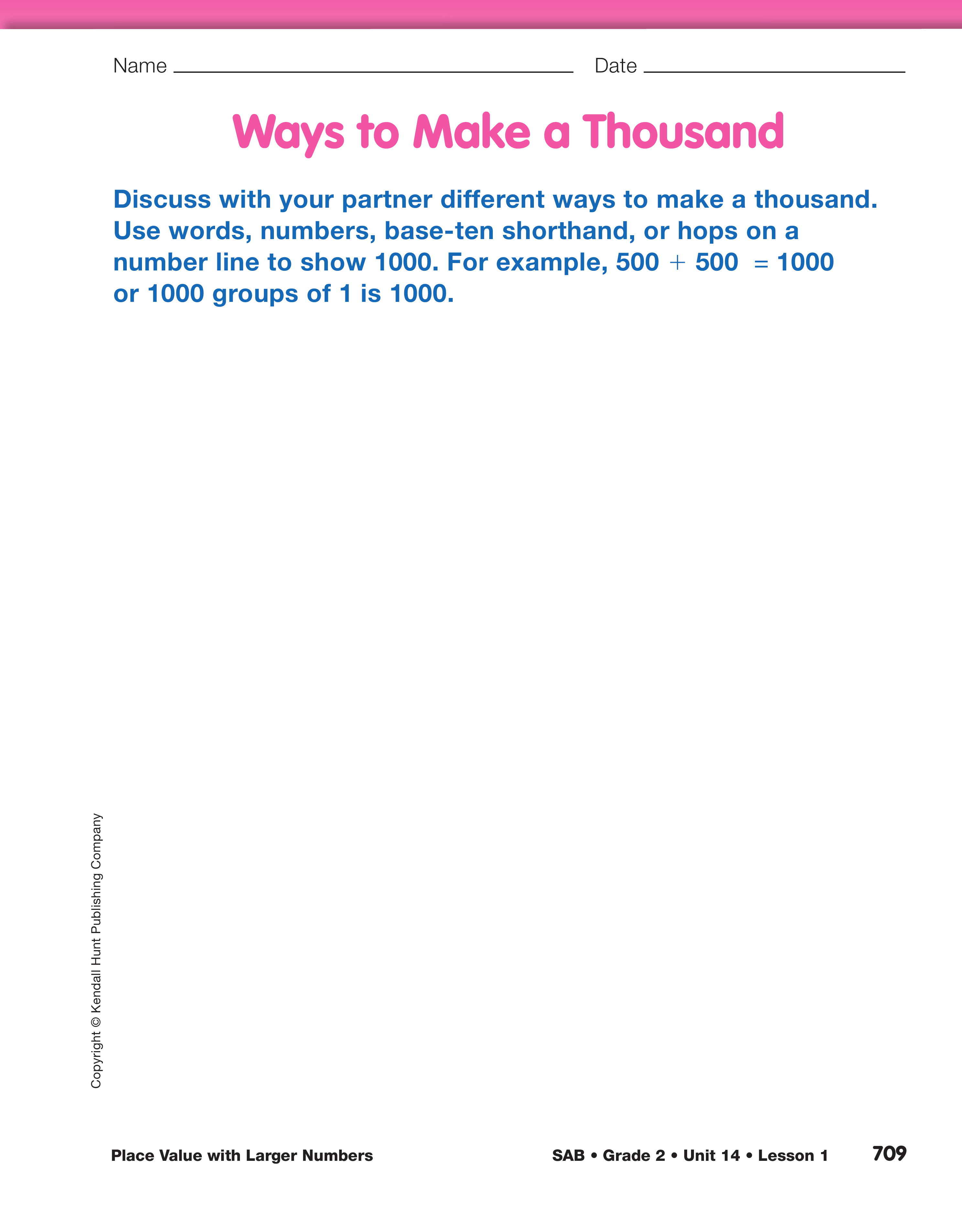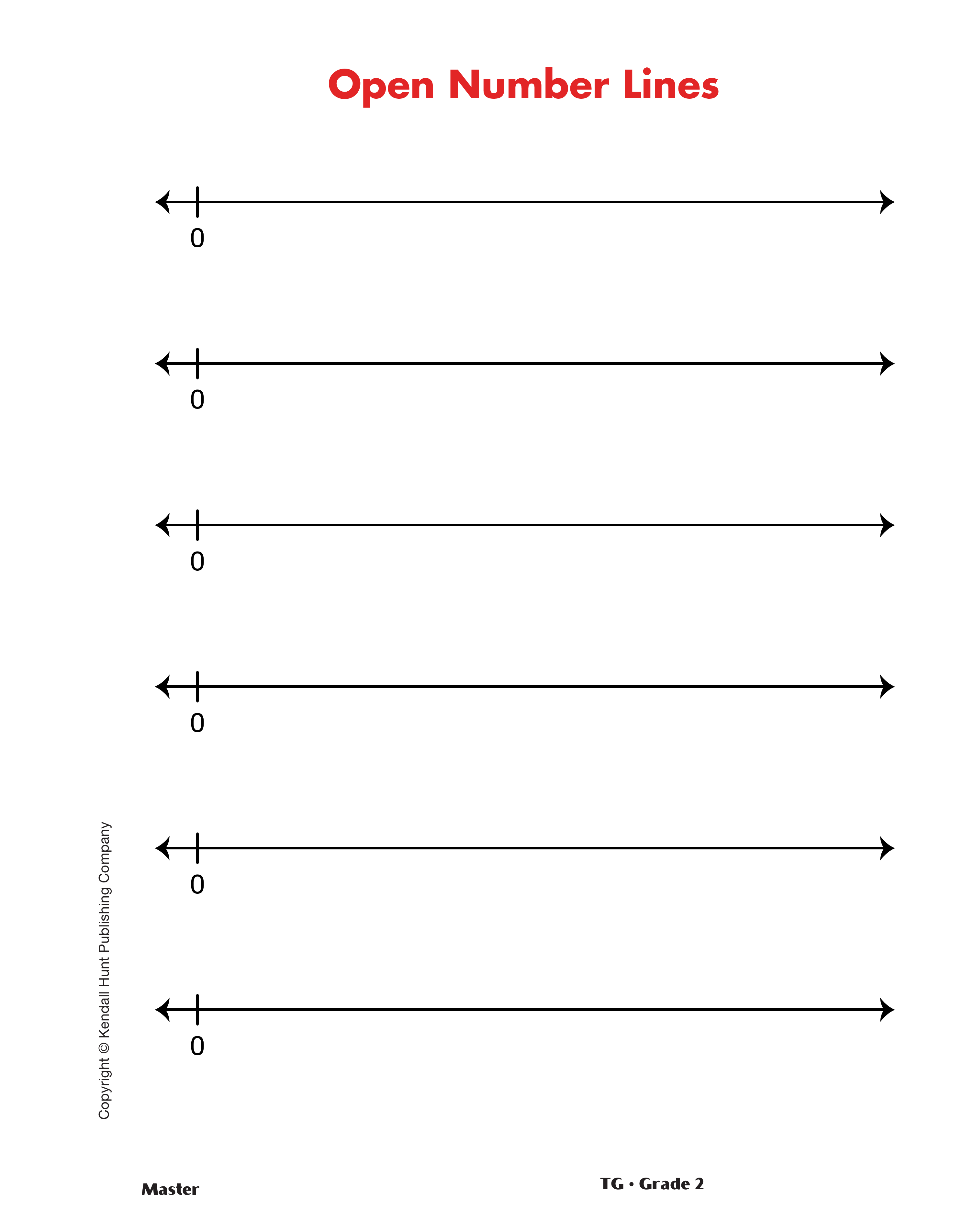Discuss Estimation in Everyday Life. To begin this
lesson, help students understand the importance of
estimation by asking them how they use it in everyday
life. Some examples include estimating to find:
- the number of objects in a jar
- how long it will take them to complete a task
- approximately how much it costs to buy 3 toys
- how much money they will have at the end of
100 days
- about how many pizzas they will need for a party
with 10 children
- how many cars they need to transport 24 children
- Is a guess the same as an estimate? (Possible
response: No, a guess could be any number but
an estimate uses strategies like benchmarks.)
- Why do we estimate the answers to addition problems? (Possible responses: We use estimation to
make sure our answers to problems make sense;
sometimes we don't need an exact answer; sometimes
we need to solve problems quickly.)
- What strategies can you use to make a good estimate? (using benchmarks, counting on by tens,
using friendly numbers, using coins)
Compare Estimation Strategies. Display the
Estimation Strategies for Addition chart you prepared
prior to the lesson. Remind students that in
Unit 7 they used these strategies to estimate sums for
two-digit numbers:
- Adding tens
- Counting on by tens
- Using friendly numbers
- Using coins
Explain that students will estimate answers to problems
with sums up to a thousand.
- Will these strategies work for sums up to a thousand? (Possible response: Yes, but we need to
change some strategies because we're not just
adding tens.)
- What strategies could we change? (Possible
response: We should change "Adding tens" to
"Adding hundreds and tens" and change
"Counting on by tens" to "Counting on by hundreds
and tens." We could also change "Using
coins" to "Using dollars and coins.")
As students suggest modifications, add new strategies
or make changes to the strategies on the
Estimation Strategies for Addition chart.
Find Friendly Numbers for Three-Digit
Numbers. Use a display of the Open Number Lines
Master to indicate 200, 300, and 400 on the number
line.
- How can you find the friendly numbers for two-digit
numbers? (Possible response: Put the numbers
on the number line and look to see which
tens the numbers are between. Then find which
ten it is closer to.)
- If you want to place 268 on the number line, which
hundreds is it between? (200 and 300)
- What is the number in the middle of 200 and 300? (250)
- Is 268 closer to 200 or 300? How do you know? (300; Possible response: 250 is the number in the
middle and 268 is larger than 250, so I know it's
closer to 300.)
- Between which two hundreds is 315? (300 and
400)
- Is 315 closer to 300 or 400? How do you know? (300; Possible response: It's only 15 away from
300 but it's 85 away from 400.)
Use another open number line and indicate 250, 260,
and 270, leaving space between the numbers.
- Find the closest ten to 268. Which two tens is 268 between? (260 and 270)
- Is it closer to 260 or 270? How do you know? (270;
Possible response: It's 8 away from 260 and
2 away from 270.)
Continue with other examples. If students have difficulty
with the concept of finding the closest tens,
demonstrate the similarity to finding friendly numbers
for two-digit numbers.






















